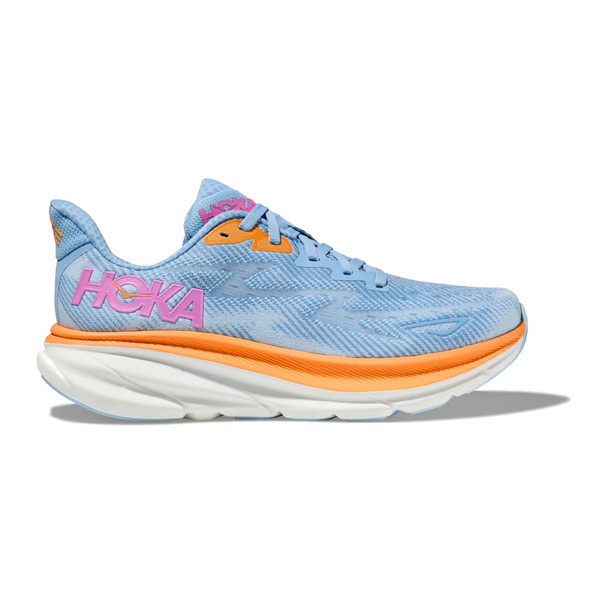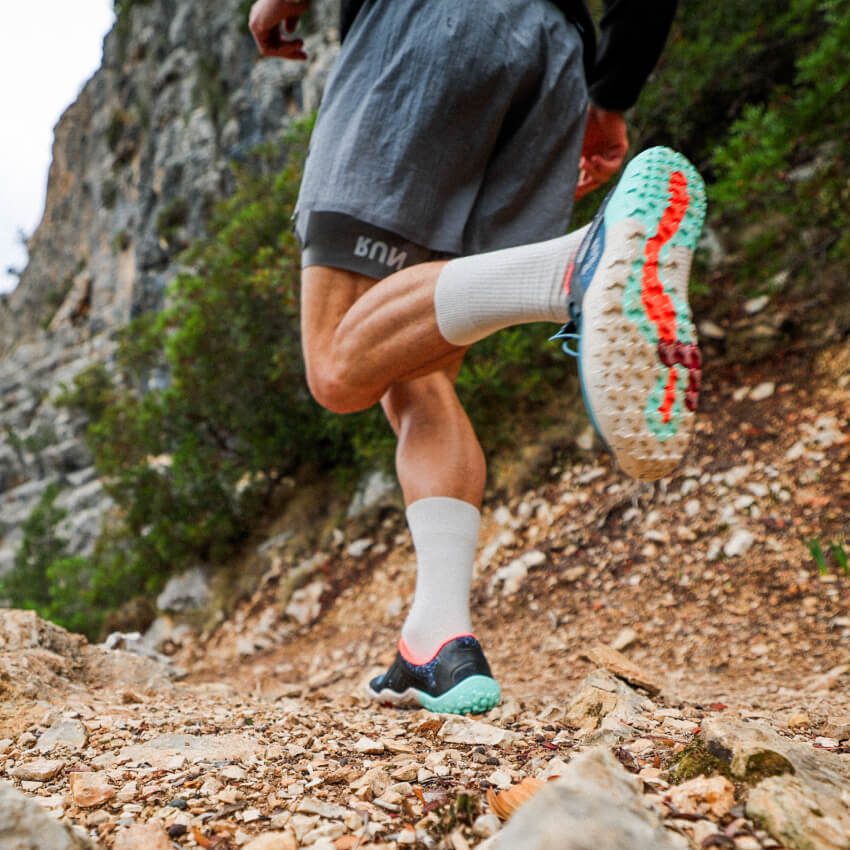
Barefoot Trail Running Shoes: The Essentials for Natural Running
What Are Barefoot Trail Running Shoes?
Barefoot trail running shoes are designed to mimic natural running. They offer minimal cushioning and a thin sole. These shoes aim to provide a closer connection to the ground. Unlike traditional running shoes, they prioritize flexibility and responsiveness. Barefoot trail running shoes promote a more natural stride, often with zero or minimal heel-to-toe drop. They are tailored for outdoor terrains, offering protection without compromising foot movement.
Key Features of Barefoot Trail Running Shoes
Barefoot trail running shoes incorporate specific features to enhance performance and comfort:
- Thin Sole Design: Provides ground feel and natural movement.
- Minimal Cushioning: Avoids excessive padding to encourage barefoot-like running.
- Wide Toe Box: Allows toes to spread naturally for stability and comfort.
- Zero or Low Heel Drop: Encourages natural alignment and running posture.
- Breathable Materials: Keeps feet dry and comfortable during intense runs.
- Durable Construction: Protects feet from rugged trails and sharp objects.
- Lightweight Build: Reduces foot strain and enhances mobility.
Differences Between Barefoot and Traditional Running Shoes
Barefoot trail running shoes differ significantly from traditional running shoes. Here are the key differences:
- Cushioning: Traditional shoes have thick padding; barefoot shoes minimize cushioning.
- Support: Traditional shoes offer structured arch support; barefoot shoes rely on natural foot strength.
- Heel Drop: Traditional shoes often feature a higher heel-to-toe drop; barefoot shoes aim for zero or minimal drop.
- Flexibility: Barefoot shoes excel in flexibility, while traditional ones are often rigid.
- Weight: Barefoot shoes are typically lighter compared to traditional models.
- Foot Movement: Barefoot shoes allow for natural toe spread; traditional shoes may confine toes.
- Ground Contact: Barefoot shoes enhance ground feel; traditional shoes may limit sensory feedback.
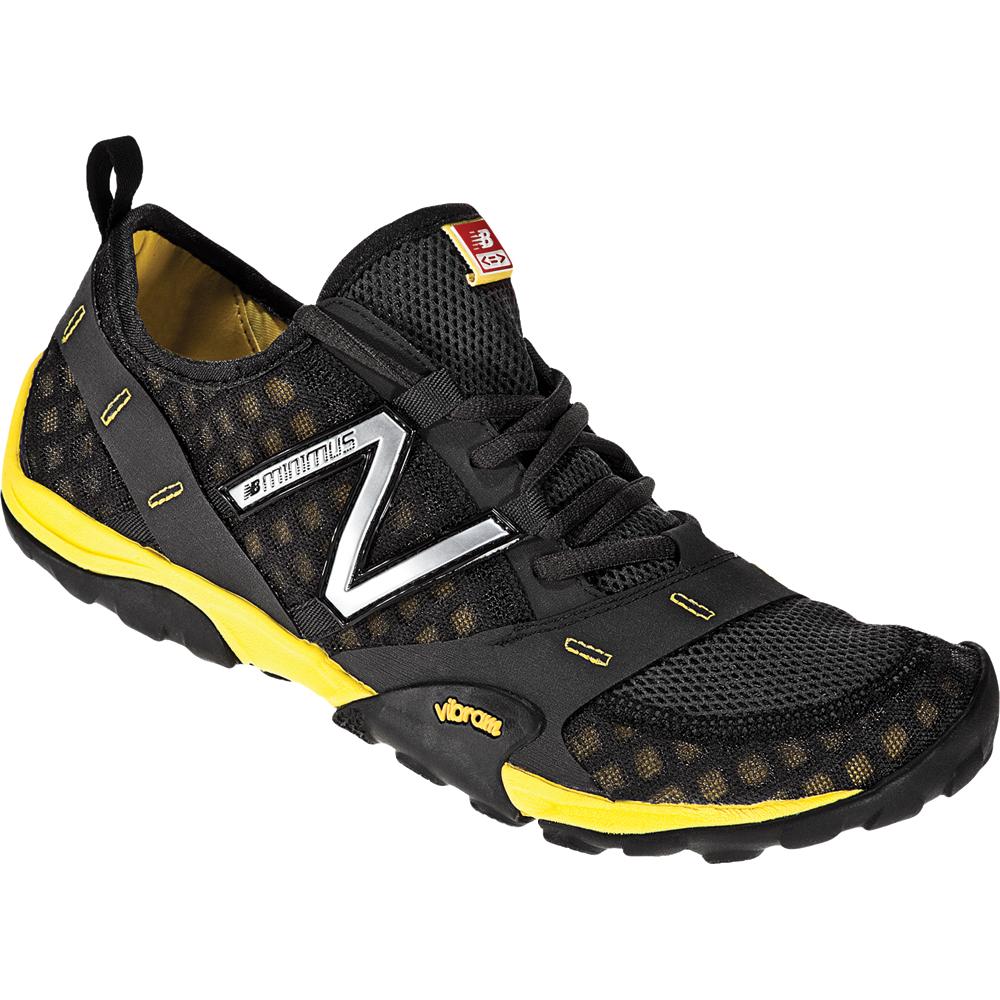
Benefits of Using Barefoot Trail Shoes
Running in barefoot trail running shoes offers multiple advantages for both beginners and experienced runners. These benefits help improve performance, strengthen the body, and reduce risks on rugged terrains.
Enhanced Foot Strength and Flexibility
Barefoot trail running shoes encourage foot muscles to work naturally. They strengthen the muscles and arches over time. The shoes allow for natural toe splay, improving stability on uneven trails. Without heavy cushioning, they promote better flexibility in foot movement. Over time, they can help build stronger and more adaptive feet.
Improved Proprioception and Balance
Proprioception refers to the ability to sense body position and movement. Barefoot trail running shoes enhance proprioceptive feedback from the ground. This helps runners adapt to terrain changes more quickly. Improved ground feel boosts balance, making uneven trails easier to navigate. Runners develop a deeper connection between their feet and the environment.
Natural Running Form and Reduced Injury Risk
Barefoot trail running shoes promote a natural stride. They encourage midfoot or forefoot striking instead of the heel-first impact. This reduces strain on joints and lowers injury risks like shin splints. Lightweight design minimizes foot fatigue, allowing smoother runs. Over time, using these shoes can improve posture and running efficiency.
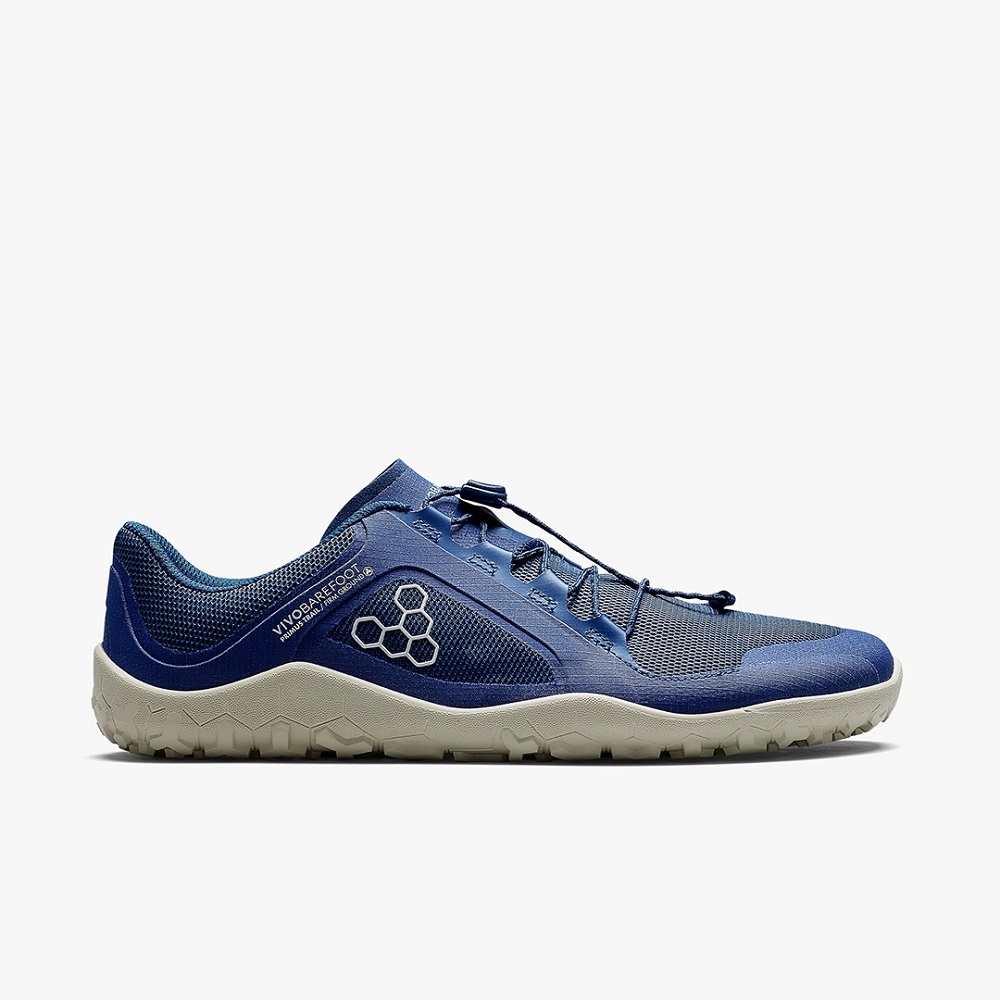
How to Choose the Right Barefoot Trail Shoes
Choosing the right barefoot trail running shoes is essential for comfort and performance. Consider factors such as fit, material, durability, and traction to find the ideal pair for your needs. Each aspect plays a crucial role in ensuring you get the most out of your running experience.
Evaluating Fit and Comfort
The fit of barefoot trail running shoes is critical for stability and support. Select shoes with a wide toe box to allow natural toe movement. Ensure there is enough space to avoid squeezing your toes, but not so much that your feet slide inside. Look for shoes that feel snug but not restrictive.
Comfort is equally important. Opt for shoes with breathable materials to keep your feet dry. Lightweight designs minimize discomfort during long runs. Try the shoes on and test for any pressure points or areas that may cause irritation. Proper sizing ensures better control and reduces the risk of injuries.
Material and Durability Considerations
Materials determine the longevity and overall quality of barefoot trail running shoes. High-quality, durable construction ensures the shoes survive rugged trails. Choose shoes made with flexible materials for natural movement and adaptability.
Breathable fabrics, such as mesh, keep your feet cool in various conditions. Look for reinforced areas, especially around the toe and sole, for added durability. Prioritize lightweight and eco-friendly materials when possible for a sustainable choice without compromising strength.
Traction and Grip for Different Terrains
Traction is essential for navigating various terrains safely. Barefoot trail running shoes should have sturdy soles with effective grip patterns. Shoes with versatile tread designs perform well on mud, rocks, or uneven surfaces.
Consider the specific trails you frequent. Tougher terrains demand aggressive tread patterns, while smoother paths may require less grip. Vibram soles are highly recommended for superior traction. Proper grip reduces the risk of slipping or skidding during runs, especially in wet or challenging conditions.
Popular Brands for Barefoot Trail Shoes
Choosing the right brand for barefoot trail running shoes can significantly impact your running experience. Popular brands offer innovative designs and features tailored for various trail conditions. These brands emphasize comfort, durability, and natural running performance.
Top Barefoot Trail Shoe Brands to Explore
Several brands stand out for their quality barefoot trail running shoes:
- Vibram: Known for its durable soles and exceptional traction. Vibram is a leader in natural footwear.
- Merrell: Offers lightweight shoes with breathable materials and wide toe boxes for comfort.
- Xero Shoes: Focuses on minimalist designs that allow natural foot movement and flexibility.
- Vivobarefoot: Provides eco-friendly options with thin, flexible soles for ground feedback.
- Altra: Features zero-drop platforms designed to promote proper running posture and foot alignment.
These brands are trusted by runners worldwide for their unique approach to barefoot trail running.
Unique Features and Innovations of Leading Brands
Each brand offers distinct features and innovations to enhance your trail running experience:
- Vibram: Patented tread designs for superior grip on rugged terrains.
- Merrell: Integrated arch stabilizers for added support during long runs.
- Xero Shoes: Ultralight materials and adjustable straps for a customizable fit.
- Vivobarefoot: Use of recycled materials and puncture-resistant soles for durability without harming the environment.
- Altra: Foot-shaped designs to allow natural toe splay and improved stability.
Exploring these brands ensures you find the perfect blend of quality and performance for your barefoot trail running needs.
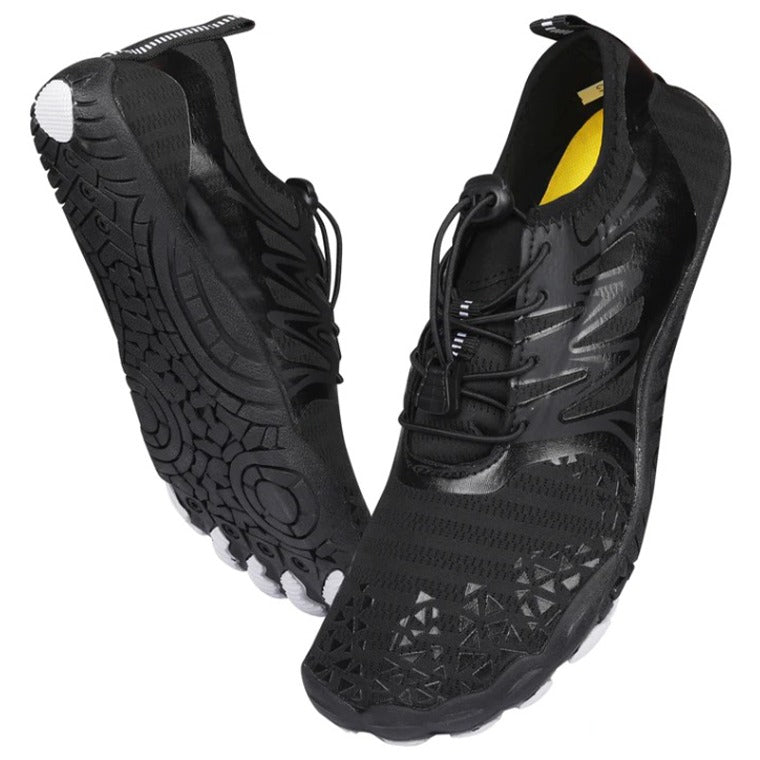
Tips for Transitioning to Barefoot Trail Running
Transitioning to barefoot trail running requires patience and a strategic approach. Proper adaptation minimizes discomfort and prevents injuries. Below are essential tips to help you smoothly shift to barefoot trail running.
Gradual Adaptation and Mileage Increase
- Start by walking or jogging short distances in barefoot trail running shoes.
- Slowly increase your mileage over weeks, not days, to avoid overuse injuries.
- Alternate between your traditional shoes and barefoot trail running shoes initially.
- Run on softer surfaces like grass or dirt trails during your adaptation phase.
- Listen to your body; stop if you experience unusual pain or soreness.
Key Exercises to Strengthen Feet and Ankles
- Perform toe curls by gripping a towel or picking up small objects with your toes.
- Practice calf raises daily to strengthen your lower legs and improve balance.
- Walk barefoot around your house to activate foot muscles naturally.
- Use a balance board to enhance stability and ankle strength.
- Stretch your Achilles tendons and calves to improve flexibility.
Common Mistakes to Avoid
- Avoid running long distances immediately in barefoot trail running shoes.
- Don’t ignore discomfort or pain, as it can lead to serious injuries.
- Avoid rough or rocky terrains during your initial runs.
- Don’t neglect foot exercises; they are crucial for a safe transition.
- Be patient; rushing the process can result in setbacks or injuries.
By following these tips, transitioning to barefoot trail running can be both safe and rewarding. Gradual adaptation and consistent practice help you enjoy the benefits of natural running effortlessly.
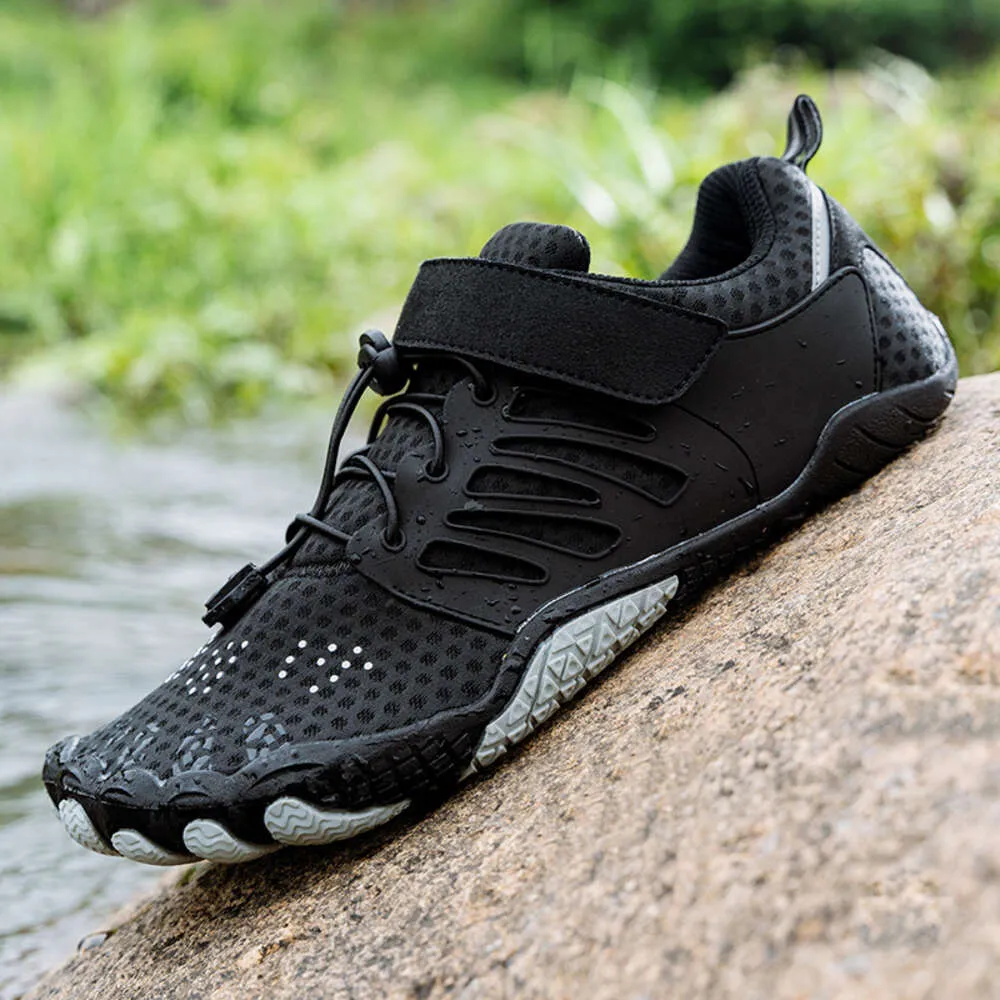
Maintaining and Caring for Barefoot Trail Shoes
Proper care ensures your barefoot trail running shoes last longer and maintain peak performance. Regular maintenance helps protect their materials, improves comfort, and keeps them trail-ready.
Cleaning and Drying Tips
- Remove dirt and debris: Use a soft brush to clean soles and fabric. Avoid sharp tools to prevent damage.
- Hand wash only: Use mild soap and cool water. Do not machine wash as it can ruin materials.
- Focus on the interior: Clean the inside to remove sweat and odor buildup. Use a damp cloth or sponge.
- Avoid harsh chemicals: Strong detergents weaken fabrics and damage the shoe’s structure. Stick to gentle cleaning agents.
- Dry properly: Air-dry your shoes in a shaded area. Avoid direct sunlight and high heat.
- Stuff with newspaper: Insert newspaper to absorb moisture and help shoes retain their shape during drying.
Extending the Lifespan of Your Shoes
- Rotate your shoes: Use multiple pairs to reduce wear and extend their lifespan.
- Store in a dry place: Keep shoes in a cool, dry spot to prevent mold and material degradation.
- Inspect regularly: Check for damage to soles, stitching, or materials. Repair small issues before they worsen.
- Avoid improper use: Only wear barefoot trail running shoes for intended activities. Don’t use them for casual or daily wear.
- Use protectors: Apply water-repellent sprays to guard against moisture and stains on trails.
- Replace worn out parts: Replace insoles or laces to keep shoes performing optimally.
By cleaning and maintaining your barefoot trail running shoes properly, you can enjoy their benefits for a longer period.
Reviews of the Best Barefoot Trail Shoes
Top-Rated Models and Their Benefits
When choosing barefoot trail running shoes, understanding the top models can guide your decision. Here are some highly rated options and their standout advantages:
- Vibram FiveFingers V-Trail 2.0: Offers excellent ground feel and multi-terrain grip. Known for durable Vibram outsoles.
- Merrell Trail Glove 6: Combines lightweight design with a snug fit for natural foot movement. Provides arch stability.
- Xero Shoes TerraFlex: Features flexible soles, great for rugged trails. Has adjustable straps for a personalized fit.
- Vivobarefoot Primus Trail FG: Ideal for eco-conscious runners. Puncture resistance adds protection without sacrificing flexibility.
- Altra Superior 5: Highlights zero-drop cushioning with enhanced toe box space. Improves comfort for longer trail runs.
Each model is designed with specific benefits, offering tailored experiences for trail runners.
Comparison of Features and Performance
Comparing features ensures you find the ideal barefoot trail running shoes. Here’s a detailed performance breakdown:
- Traction: Vibram shoes excel in rocky conditions, while Vivobarefoot suits softer terrains.
- Flexibility: Xero Shoes and Vivobarefoot are unmatched in allowing free foot movement.
- Durability: Merrell and Vibram deliver excellent longevity with high-quality materials.
- Weight: Merrell and Xero Shoes are exceptionally lightweight, reducing fatigue.
- Eco-friendliness: Vivobarefoot stands out with sustainable, recycled materials.
- Fit and Comfort: Altra provides ample toe box room, while Merrell offers snug yet flexible fits.
By aligning these features with your needs, you can identify the perfect pair for your barefoot trail running journey.
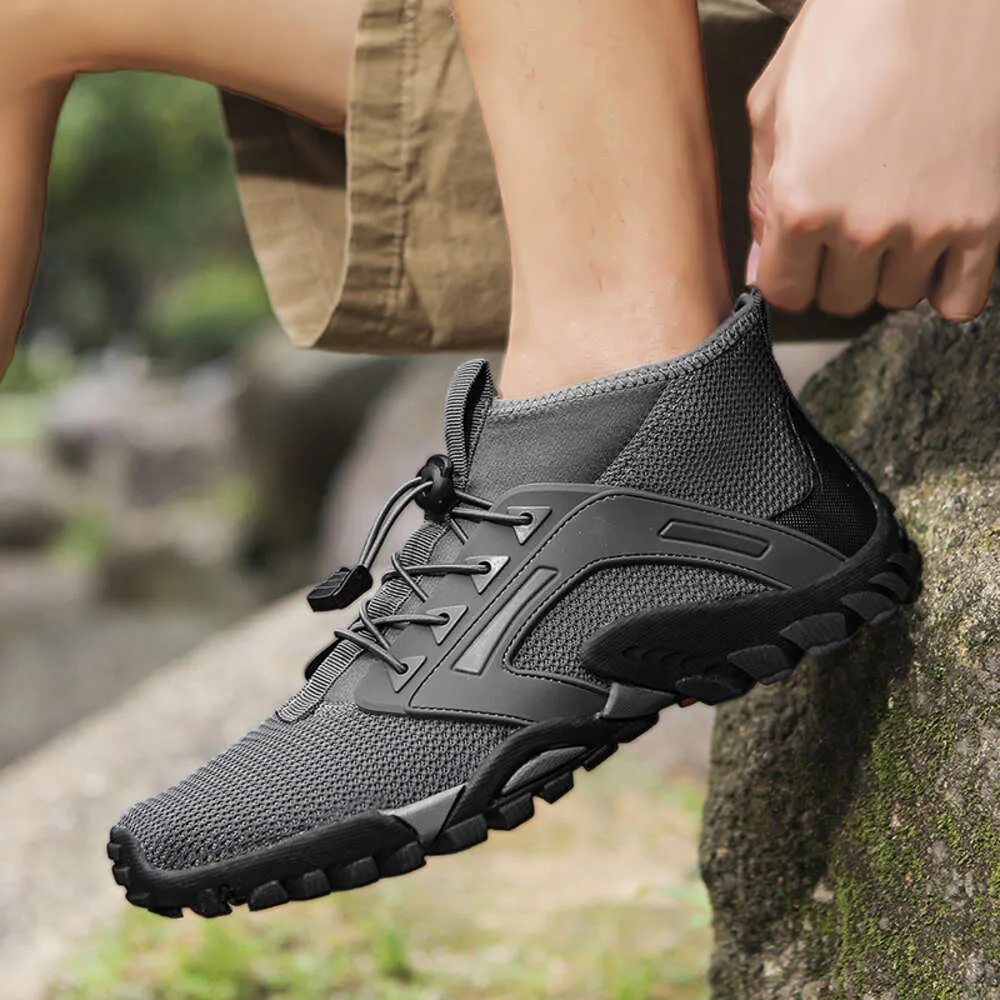
Frequently Asked Questions About Barefoot Trail Shoes
Are Barefoot Shoes Suitable for All Runners?
Barefoot trail running shoes are not suitable for everyone. They work best for runners seeking natural movement and minimalistic designs. Experienced runners may adapt more quickly to these shoes. Beginners, however, should approach with caution. Certain conditions like flat feet or weak arches may require additional support. Consult a podiatrist before transitioning to barefoot shoes if you have existing foot issues. Gradual adaptation is key to avoiding injuries for all runners.
Can Barefoot Running Help Prevent Injuries?
Barefoot running can help reduce some injuries but is not a guarantee for everyone. These shoes promote forefoot and midfoot striking, reducing joint impact and minimizing knee pain risk. They also strengthen foot muscles and improve posture. However, improper transitioning or overuse can lead to injuries, such as plantar fasciitis. Gradual training, proper form, and listening to your body are essential for injury prevention. Barefoot running works best when paired with a safe, mindful approach.
Care and Maintenance of Barefoot Trail Running Shoes
Cleaning Your Shoes
Proper care for your barefoot trail running shoes ensures their longevity and performance. After each run, remove dirt and debris from the outsoles. A soft brush or cloth can help remove mud and other particles. For tougher stains, rinse the shoes with water and allow them to air dry completely. Regular cleaning keeps your shoes looking good and performing well, maximizing their lifespan.
Storing Shoes Properly
When not in use, store your barefoot trail running shoes in a cool, dry place to prevent moisture buildup. Avoid leaving them in direct sunlight, as this can cause materials to deteriorate over time. Keeping the shoes in breathable storage naturally prevents odors and maintains freshness. Using a shoe tree can help retain their shape, especially when not worn for extended periods.
Replacing Shoes as Needed
Even with proper care, running shoes have a limited lifespan. Over time, cushioning and support will diminish, affecting overall performance. Generally, barefoot trail running shoes should be replaced after 300 to 500 miles, depending on usage and terrain. Maintaining awareness of wear patterns and changes in comfort will guide you in determining when it’s time for a new pair. Investing in fresh shoes will enhance your running experience and provide the support needed for safe running.
Conclusion: Embrace the Barefoot Trail Running Lifestyle
Discover the Joy of Natural Running
In conclusion, barefoot trail running shoes can enhance your running experience by encouraging a natural running style that promotes health and efficiency. Understanding the benefits of barefoot running is the first step toward enjoying this adventure. The connection to the ground, improved foot strength, and better running form can all lead to greater satisfaction on the trails.
Equip Yourself with Knowledge
Knowledge is power when it comes to selecting the perfect pair of barefoot trail running shoes. By understanding the features that make these shoes effective and comfortable, you can make an informed choice. Take the time to identify your foot type, try on various brands, and consider the terrain you’ll be navigating. Embracing this information will lead to a successful running journey.
As you embrace the barefoot trail running lifestyle, consider sharing your experience with others. Joining local running groups or participating in online forums can provide a supportive community. Share tips, challenges, and successes with fellow runners who share your passion for health and nature. Engaging with others can strengthen your commitment to the sport and inspire those around you.
Enjoy Every Step
Finally, remember to enjoy every step of your running journey. The trails await, filled with opportunities for adventure and exploration. As you lace up your barefoot trail running shoes, take a moment to appreciate the freedom and connection you have with the environment. By investing in the right footwear and adopting a natural running style, you can experience the true joy of running on your terms. Embrace the challenge, stay committed, and enjoy the benefits of a healthy, active lifestyle!
